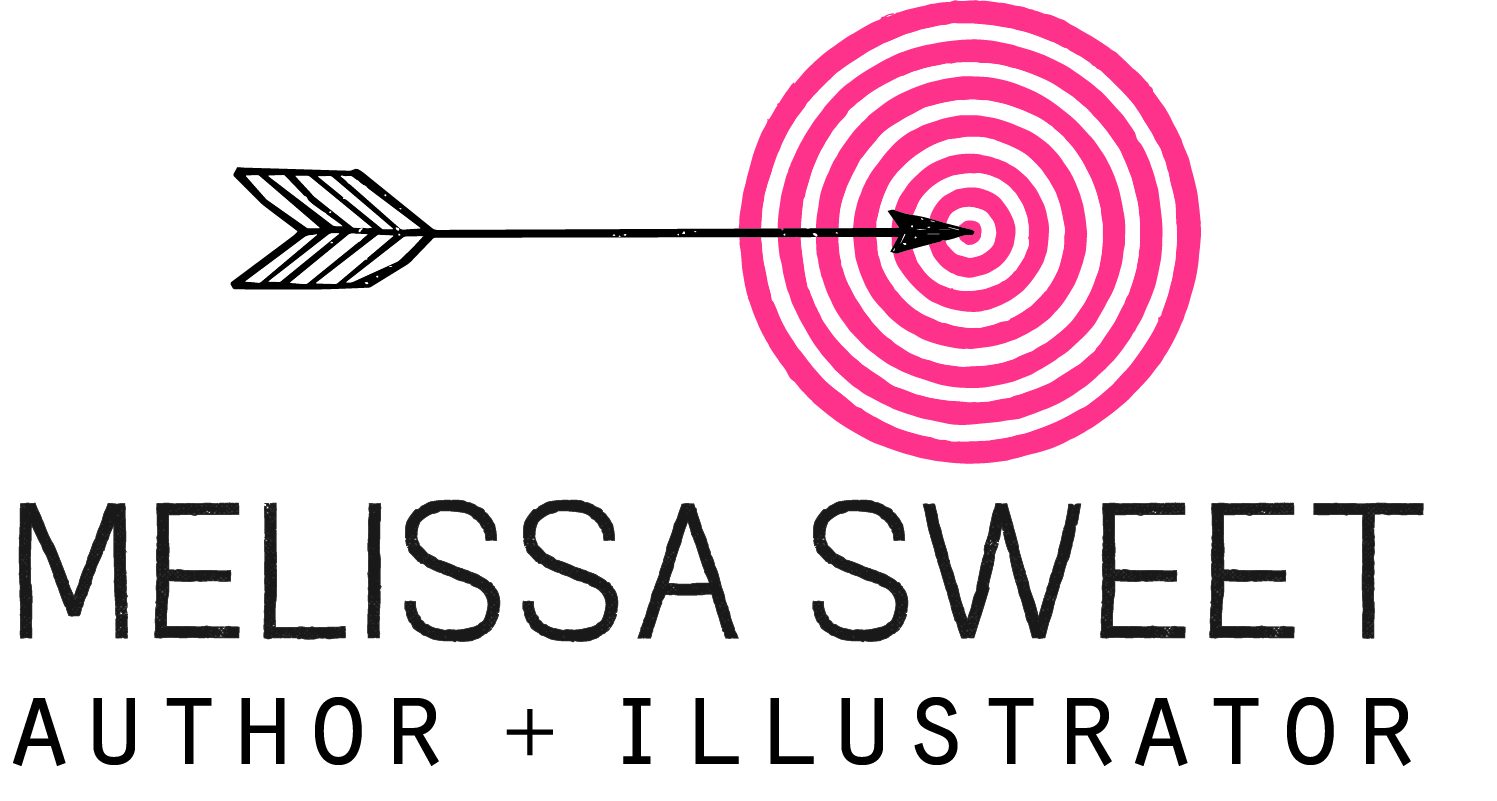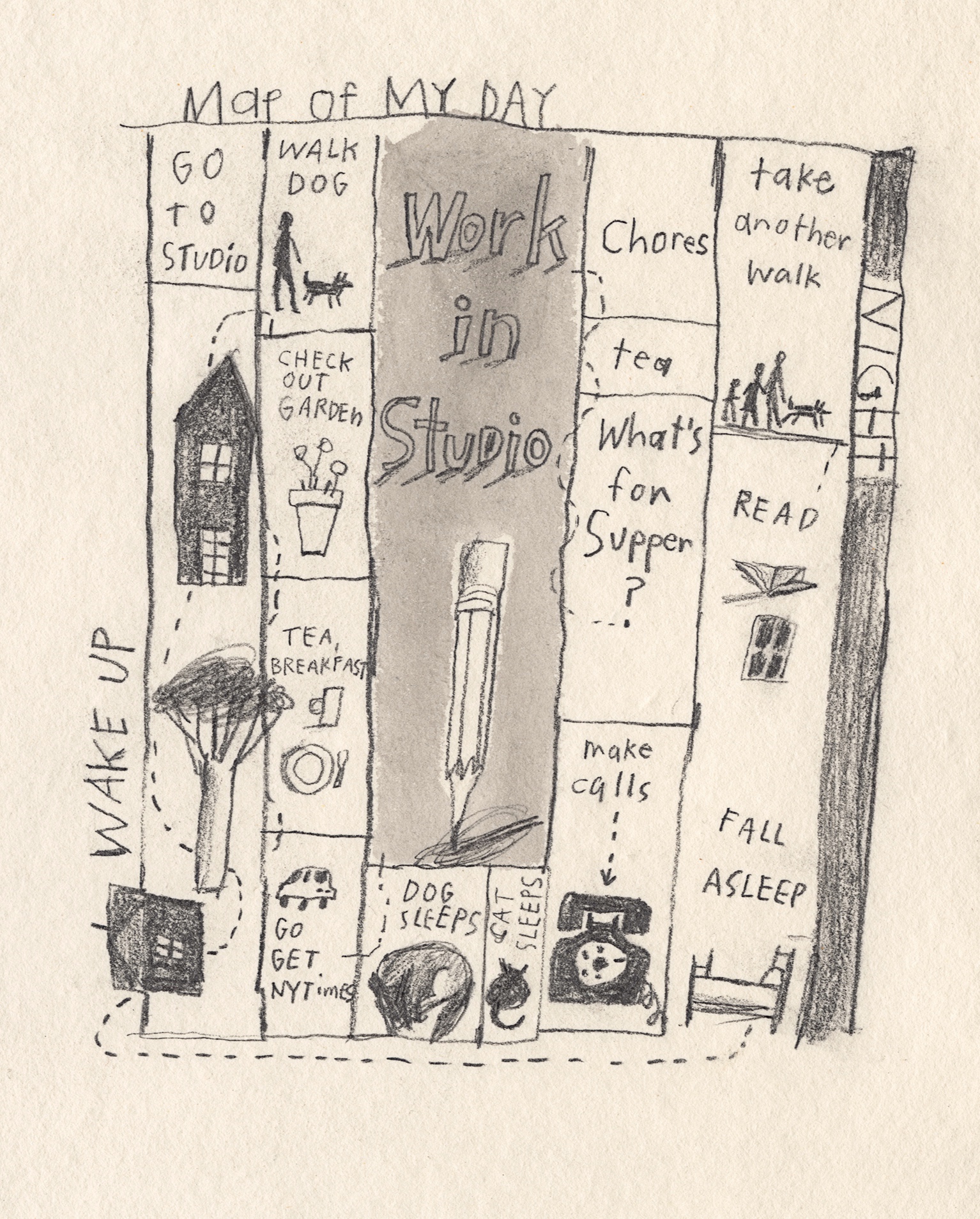“Whatever makes a child want to glue macaroni on a paper plate and paint the assemblage and see it on the refrigerator - that has always been strong in me. ”
Thank you for visiting my site.
I’ve been making art ever since I could hold a crayon, scissors and Etch–A–Sketch.
Writing and illustrating children’s books is a lot like playing with art supplies as a kid– it’s fun to make something out of nothing and each day is different.
10 Questions
1. Let’s start with a few favorites...favorite color?
Fuchsia, and every shade of pink.
2. Favorite word?
Rapscallion.
3. Favorite weather?
Blustery warm winds out of the south around 68 degrees. Here in Maine we have about three days a year that fit that description!
4. What were your favorite books as a kid? Favorite artists?
We grew up with Golden books (available in grocery store for twenty–five cents! ) including stories with illustrator Mary Blair’s luminous art, GREEN EGGS AND HAM by Dr. Seuss, and the LITTLE BEAR series illustrated by Maurice Sendak. Though I’ve always been enamored with picture books, encyclopedias and New Yorker cartoons, I was not an avid reader as much as I liked looking at pictures.
5. Tell us about a typical day.
Recently I found this quote:
WAKE UP
MAKE ART
REPEAT
which pretty much says it all. Here’s a map of my day. I love routine of the studio and over the years I’ve found keeping a schedule has made keeping deadlines much easier.
6. It’s clear you have a love of color, textures, collage--mixing up a variety of medium. Tell us about your technique, your inspiration, and how you developed your style.
I’ve always been a forager and collector of tiny weird things (desiccated amphibians, buttons, rusty bottle caps). But a number of years ago I was saving some unsuccessful watercolors that I cut up and used in another painting. From there, adding other collaged elements to my paintings gave the art a freshness, making it less precious and more fun to make. Often our eyes will go the collaged elements and that difference gives the piece some visual tension.
All of my work is done by hand. I’ve never mastered the computer for making art. The computer gives me too many choices and I’m always looking to narrow down the decisions. Working this way is slower, but it also allows for serendipity and being surprised by what’s happening in the process.
7. You’ve written and illustrated about other historical and non-fiction subjects. What is the best part about working on these projects? The most challenging? The best part is the research. The poet Mary Oliver wrote, “the palace of knowledge is different from the palace of discovery…The world is not what I thought, but different and more! I have seen it with my own eyes!” All the richness in the experience of reading, of holding primary source documents (like holding Roget’s original handwritten Thesaurus), traveling, doing interviews, gives me the clues as to the materials and ways I want to illuminate a person’s life or subject. It’s like piecing together a three-dimensional puzzle.
Every book is a challenge that compels me to grow artistically, ask questions, become more curious. I love the constraints of the book format. It enables me to push the boundaries of design.
8. Who or what has had the biggest influence on you as an artist?
My parents. They showed me that making stuff is easy, just keep at it, keep practicing. That’s the best part of making art– the process is as much fun as the end product.
9. Do you have any advice to share with young, aspiring artists?
I’ve been inspired by the words of sculptor Teresita Hernandez: “An artist’s work is almost entirely inquiry based and self-regulated. It is a fragile process of teaching oneself to work alone, and focusing on how to hone your quirky creative obsessions so that they eventually become so oddly specific that they can only be your own.”
By paying attention to what we love and how we interpret the world, the personal becomes the universal. That’s what makes art resonate.
10. In your interview with Julie Danielson she asked the question: If Heaven exists, what would you like to hear God say when you arrive at the Pearly Gates?
The dogs are here. They’ve been waiting for you.









